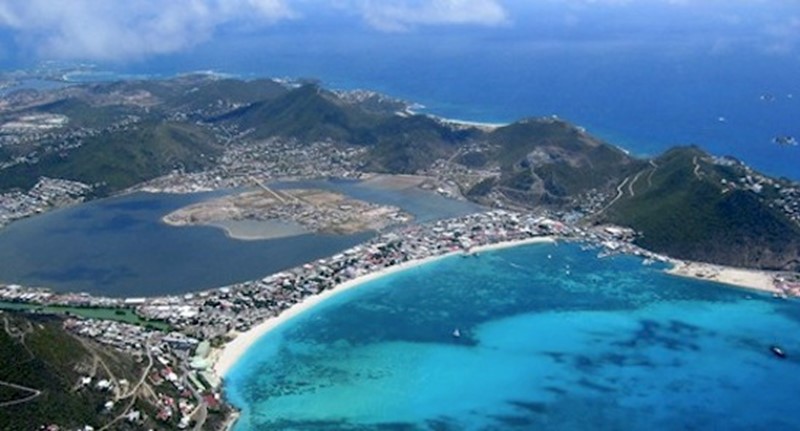
The St. Martin Nature Reserve is a wonderful example of environmental protection done right. Sited on the north-east coast of the French side of the island, it consists of 3,060 hectares (more than 7,500 acres) and 11 kilometres (nearly 7 miles) of coastline, set aside nearly 30 years ago to protect coral reefs, mangroves, seagrass beds, wetland ponds, salt flats and the coastal forest. It includes several small islands. Discovery trails are laid out for the more energetic visitor.
For nature lovers and the adventurous at heart, the St. Martin Nature Reserve is a can’t-miss experience in St. Martin - and one that can be enjoyed sustainably. Below, we provide all the information you’ll need to plan your expedition to the Reserve.
The Lay of the Land (and Sea)

|
|
|
In the coastal waters, coral provides habitat for dozens of kinds of colourful reef fish, while the seagrass shelters and feeds numerous species. The reefs have the added advantage of protecting the coastline from ocean swells. Humpback whales and bottlenose dolphins often delight visitors on the Atlantic side between the French Quarter neighbourhood and the Oyster Pond.
Equally important to the Nature Reserve, where visitors can stroll along meandering paths, are the ponds and mangroves where two ecosystems overlap. Large stretches of shallow water blend into dense forests protected by mangroves. They prevent the forests from being flooded during the rainy season, filtering and purifying the waters.
For the Birds

Photo courtesy of St. Martin Tourist Board
The reserve is a birder's paradise, with avians both large and small drawn to the thick foliage. Hummingbirds, bananaquits, kingbirds, terns, shearwaters and egrets share the habitat in harmony. Pelicans fish everywhere. Occasionally rarer birds passing through on their migrations north and south can be spotted by those with eagle eyes - and luck.
Trees that were once native to Africa have established themselves in the dry forest. Tamarind, mango, flamboyant, kapok, red gum and guava berry all flourish, alongside beautiful wild orchids, hibiscus and aloe. Great southern white butterflies dart around looking like snowflakes. On the Froussards footpath, between Anse Marcel and Grand Cayes beach, one travels through the last intact coastal forest on the island. The hike takes about two and a half hours. Here, one might be lucky enough to spot the endangered red-topped Turk’s cap cactus.
Getting out to Creole Rock

Photo: Creole Rock, courtesy of Captain Jo
Creole Rock, one of St. Martin’s great landmarks, is reserved for the birds which nest there. Visitors are encouraged to tie onto any of the official moorings. Some are reserved for dive clubs, while others are set aside for boats up to 50 feet, or dinghies and small sailboats. Using the correct mooring is critical to avoid harming the environment. Once moored, beginners and advanced divers can take advantage of one of the best dive spots in St Martin. The shallow waters make it perfect for beginners, with or without air tanks. However, engines cannot be used within 30 metres (100 feet) of the beach and visitors cannot go ashore.
Spend a Day at Green Cay
A few hundred feet offshore from the excitement of Orient Bay Beach lies the secluded islet of Green Cay. It’s renowned for its outstanding corals and multitudes of reef fish, where everyone from beginners to advanced divers can expect to see nature at its best. One might even spot a turtle.
Go Offshore to Pinel Island

Photo: Pinel Island, St. Martin (©Clément Louineau)
Another dry forest grows on Pinel Island, where a footpath connects the island’s three beaches. Well-organized signs and plaques tell the story of local plants and birds. Access can be made by shuttle boat from Cul-de-Sac, others make the easy trip across the water by paddleboard or kayak. Two restaurants delight with their culinary offerings of Caribbean specialties and refreshing cold drinks. The sandy beaches and shallow calm waters on the land side make for excellent snorkelling. Matching the land-based discovery trails, an underwater route has been laid out to allow snorkellers to observe amazing fish and corals without damaging them. Leatherback and green turtles can often be seen. By contrast to the calm of the land side, only a 10-minute walk along the beach, Atlantic waves crash dramatically ashore. At sunset, everyone leaves and only the iguanas and hermit crabs scurry around.
Tintamare Island

Photo: Tintamarre, St. Martin (Donovan Tremor)
Further out to sea is the uninhabited island of Tintamarre, where crystal clear waters make one want to dive in immediately after tying off at one of the 17 permanent yellow moorings. There’s a soft white sandy beach and excellent snorkelling. An abandoned airstrip and some wrecked small planes dot the centre of the island. Visitors must be careful not to disturb the endangered brown noddy, which nests here.
These wild experiences and many more await you in the St. Martin Nature Reserve. For more information, visit https://www.st-martin.org/us/for-a-truly-friendly-experience/explore-saint-martin-nature-reserve/.


